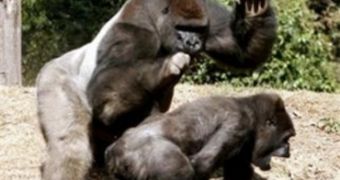Women are deceiving, men first hit and after that ask. This characterized us ever since we were just some "monkeys" in the forest, also shaping our brains differently.
A new study published in the online journal BMC Biology shows that brain structures have developed differently in primate males and females due to divergent pressures on the sexes: to keep up with social cooperation or competitive aggression.
The team made of Patrik Lindenfors, Charles Nunn and Robert Barton correlated data on primate brain structures linked to traits that are crucial for male competition, like bigger body mass and oversized canine teeth. The scientists also focused on the typical group size of each sex for various primate species with the purpose of assessing sex-specific sociality: the way the individuals of a sex tend to associate with others in social groups.
The research was carried on 21 different primate species, including chimpanzees, gorillas, and rhesus monkeys. Statistical techniques took into account the evolutionary processes.
Sexual selection was found to be a crucial factor in shaping the primates' brains. Higher male competition (which translates into greater sexual selection) was linked to certain brain zones connected to autonomic functions, sensory-motor skills and aggression. In species with high sexual selection (thus highly aggressive males), the septum - a nucleus involved in controlling the aggression - was smaller than in species with more cooperative males. In case of females, those that formed larger social groups presented also larger sizes of the telencephalon (the brain's largest part in evolved mammals).
The largest part of the telencephalon is represented by the neocortex, involved in sensory perception, generation of motor commands, spatial reasoning, cognition and intelligent behavior. The larger neocortex in the primate species with the most sociable females points to tha fact that female social skills dictated the species' brain size. The social skills on females and competitive aggression on males require the development of different brain zones.
This evolutionary pattern of the brain resulted in sexual behavioral differences, which could have even shaped our brain.

 14 DAY TRIAL //
14 DAY TRIAL //